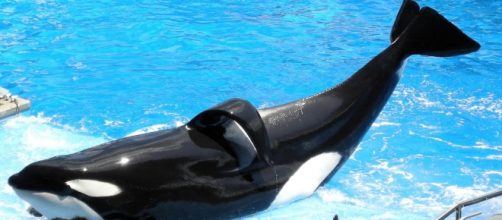2017 takes up where 2016 left off in celebrity deaths. Just days into the new year, a celebrated face passed. But it's animal, not human. Tilikum, the famed “Blackfish” orca died at SeaWorld, still in captivity. After 36 years in captivity at the Orlando amusement park, the "killer whale" is free at last. The cause of death is still unknown, but linked to a bacterial infection and perhaps health problems from limited movement. Tilikum’s backstory framed the documentary “Blackfish” and moved the protest to get the captive orca released from the tiny cages they call home.
'Blackfish' orca's dark past
Tilikum shocked the world when he killed SeaWorld trainer Dawn Brancheau in 2010 while audiences watched. No one knew quite how or why Tilikum did it, but one thing was clear--her death wasn't accidental. Several other people died suspiciously in and around the orca's tank. The story of the murdering “killer whale” made folks think twice about putting giant sea mammals in circus sideshows.
'Making a Murderer' orca
"Killer whale" is an incorrect nickname orca are given. So what would cause a "killer whale" to kill in real life? The documentary “Blackfish” sought to find out. It was Tilikum's "reality TV" show. Filmmakers explored the whale's past for clues to his odd behavior.
They unearthed film footage of crying baby whales ripped from their mothers, with many brutally killed in the process. Captors sold them to amusement parks where they were housed in cages (the equivalent of bathtubs for humans). In captivity their teeth were cut so that even if they were freed, it was doubtful they could survive.
'Blackfish' orca died of grief?
Captive whales suffer emotionally and physically in captivity. They may show obesity-related problems from lack of exercise. Others experience weight loss, illness, infection and other atypical issues from crowded conditions. Tilikum usually has his dorsal fin drooping. That's a sign he's defeated and sad, say experts. Could he even survive in the wild?
Keiko, the real-life“Free Willy” beat the odds and enjoyed freedom for a while. But could Tilikum have made it? “Blackfish” concluded that captivity drove Tilikum crazy and that's why he killed. Now many say he died of grief and despair.
SeaWorld of lies
When Tilikum was a pup, marine amusement parks were more common. And they needed big animals for their live performances. Tilikum, Shamu, Lolita and other captive whales are poster kids (so to speak) of marine shows. After animal treatment was exposed, many parks closed. Tilikum was originally housed at SeaLand and sold to SeaWorld after two fishy deaths linked to him. He was sold for breeding purposes with the understanding that he wouldn't be used in s how.
SeaWorld lied and promptly starred him in marine exhibits. They kept using him even after Brancheau's horrific death.
'Blackfish' orca's legacy lives on
"Blackfish" didn't start the push to end orca shows or free whales, but it certainly gave it a big boost. "SeaWorld of Hurt" partners with PETA (People for the Ethical Treatment of Animals) and other animal rescue groups to end captures. They succeeded in getting SeaWorld to cease using orca in shows. They got Lolita, Miami Seaquarium's whale listed with wild orca on the Endangered Species Act. But it didn't cover other captive orca, and won't' see them released.

